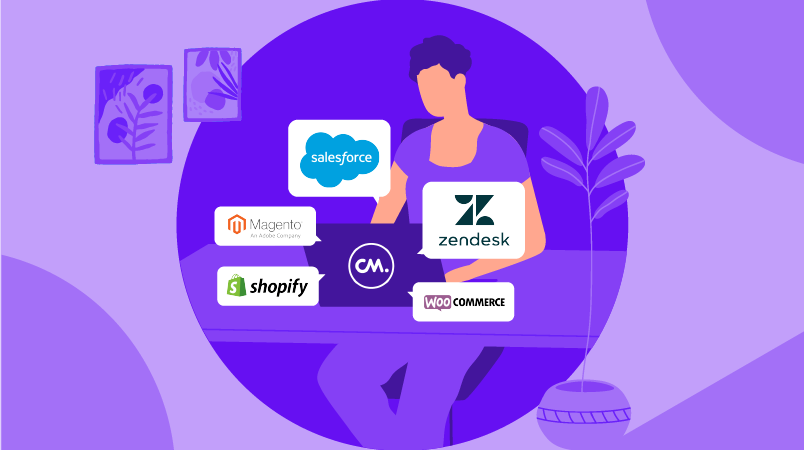What Are Multidisciplinary Teams?
Multidisciplinary teams originated in the healthcare industry — as School of Design Thinking notes, they can be defined as,
"A group of health care workers who are members of different disciplines — each providing specific services to the patient. They coordinate their services and work together towards a specific set of goals."
Whether you’re in the public or private sector, whether you’re B2B or B2C — multidisciplinary teams can help break down silos and support customer-focused employees to create more enhanced and cohesive customer experiences.
Professionals in customer-focused multidisciplinary teams benefit from the unique perspectives and expertise of different departments — including those in sales, marketing, customer experience, and customer service.
In this post, we dive into the value of multidisciplinary customer-focused teams in more detail and show you how to get started with them.
1. Why Should You Care About Multidisciplinary Teams?
From sales and marketing to customer service — there are multiple departments and professionals involved in creating a supportive and engaging customer experience.
But when these teams don’t communicate effectively and align themselves towards a common goal both the customer experience and the overall success of a business suffer. One of the best ways to break down these organizational silos and create the kind of customer experiences consumers crave is to focus on creating multidisciplinary teams. Each person brings their diverse expertise and unique perspective on how to fulfill customers’ needs to the table.
In addition, such a team correlates with customer perception — customers typically perceive your company and the people who work for you as a single entity, not a “sales rep” vs a “customer service rep”.
2. What Are the Benefits?
By breaking down silos, each professional can work together to shape and create a responsive, engaging, and supportive customer experience that is reflective of each individual customer’s needs at every single touchpoint. As B State notes, when everyone shares the same viewpoints, skills and experiences then creative and dynamic thinking will atrophy.
Each professional from each team can offer a ton of actionable, additional insights into customers — what they want, what they value, and what their biggest struggles are. As an example, marketing professionals can take insights from other team members to attract new prospects at the earliest stage of the customer journey. While customer service professionals can better pre-empt customer needs and problems, providing faster, more effective resolution.
3. Why Multidisciplinary Teams Matter in the Eyes of Your Customer
63% of customers expect businesses to have a prior understanding of their unique needs and expectations, Helpscout shows. While each team that deals with or directly targets customers has its own understanding of customers and what they want and need — this information can get lost in translation with siloed working.
Research of Salesforce shows that 76% of customers expect consistent interactions across departments, but 54% state that they feel like sales, customer service, and marketing teams don’t share information. When important customer information isn’t shared, a consistent and streamlined customer experience is disrupted.
In addition, HubSpot reports that 70% of consumers believe that departments should work together to meet their needs. For example, if a customer has a question about upgrading a subscription — they would prefer the customer success team to connect them to sales, rather than having to reach out to them themselves.
Multidisciplinary teams address this expectation — as professionals can quickly and effortlessly share customer information and work together to ensure that the right team member can handle the issue or query.
4. Tips to start working with multidisciplinary teams
To help make a multidisciplinary team a success, you need to begin with clear guidelines. These should include:
- Clearly stated shared goals and metrics – focussing on the customer
- A shared understanding of roles within the team and how these roles will impact one another
- Statements around working practices, schedules, and preferred channels — different professionals will likely be used to approaching these differently
The Way to Meet Customer Expectations: Multidisciplinary Teams
By breaking through silos and enriching customer insights — multidisciplinary teams can go a long way in enhancing customer experiences. By creating a streamlined customer experience and bringing new perspectives on how best to serve and support customers, multidisciplinary teams are well-placed to meet customer expectations.
The rise of multidisciplinary teams is one of the customer service trends covered in our new white paper on future customer service trends. Curious to learn more? Head here to read our paper.







